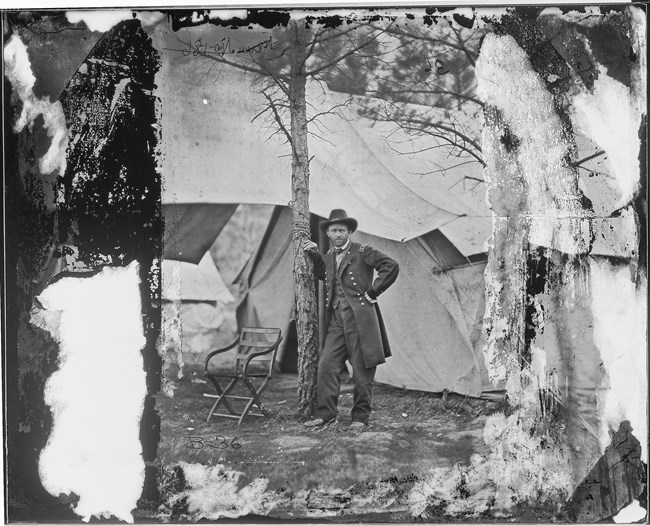Last updated: June 1, 2023
Article
Civil War Crossroads at Cold Harbor

National Archives Catalog
Recipient: Virginia Department of Conservation and Recreation
Amount: $173,859.00
Acres: 7.11
For the majority of the Civil War, capturing the Confederate capital of Richmond, Virginia, was the primary objective of Union forces in the East. Not only was Richmond a symbolic target as the Confederate’s seat of government, but the city’s Tredegar Iron Works were vital for supplying southern armies with artillery and other badly needed supplies.
Between 1861 – 1863, repeated attempts by Union armies to take Richmond failed. Although shocking in terms of killed and wounded, the major battles of these unsuccessful campaigns were fought sporadically, allowing each side to rearm and resupply for weeks between engagements. A pattern that changed in May of 1864.
Accepting command of all Union Armies and placing his headquarters with the Army of the Potomac, Lieutenant General Ulysses S. Grant altered the nature of the war to one of constant, grinding, attrition. In what became known as the Overland Campaign, Union and Confederate armies pummeled each other in an almost constant series of battles for a month until they reached a major crossroad near modern day Mechanicsville, Virginia, called Cold Harbor. Named after a local inn, the crossroad was seen as a key gateway for taking the Confederate capital from east of the James River.
After an indecisive battle at Cold Harbor on June 1, Grant allowed his exhausted troops to be reinforce and rest. A pragmatic decision, but tactical error. Attacking again on June 3, almost 50,000 Union soldiers assaulted what had become a vastly improved series of Confederate entrenchments. Experiencing tremendous losses and gaining no ground, Grant called off any further attack. After another week of fighting and losing over 12,000 casualties – more than 10 percent of the Union army, Grant abandoned his plan to take Richmond from the east and began the march south to Petersburg. This 2023 Battlefield Land Acquisition Grant awarded by the National Park Service’s American Battlefield Protection Program supports the Virginia Department of Conservation and Recreation’s effort to preserve historic and cultural resources in Hanover County.
Battlefield Land Acquisition Grants from the NPS American Battlefield Protection Program empower preservation partners nationwide to acquire and preserve threatened Revolutionary War, War of 1812 and Civil War battlefields. In addition, the program administers three other grants: Preservation Planning Grants, which are open to all sites of armed conflict on American soil, the newly authorized Battlefield Restoration and Battlefield Interpretation Grant programs. This financial assistance generates community-driven stewardship of historic resources at the state, tribal and local levels.
